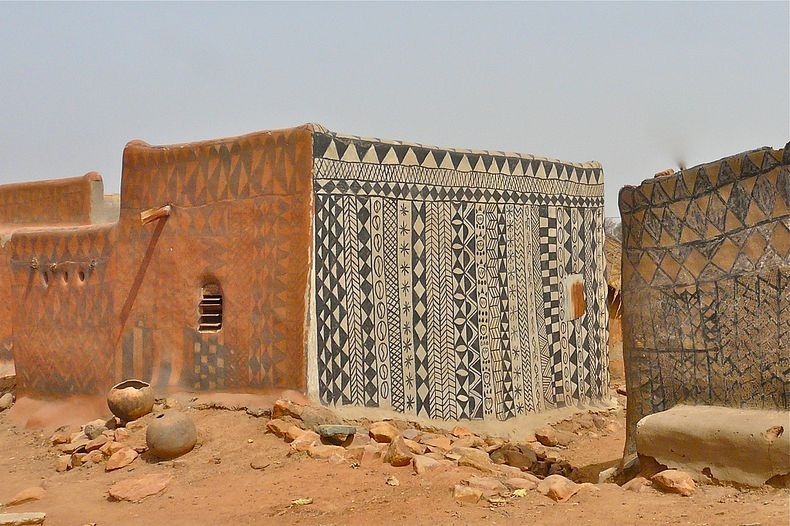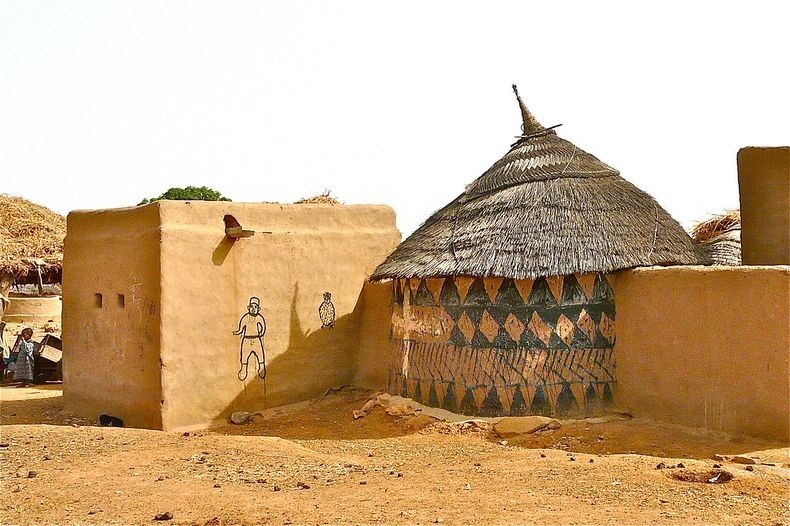In the south of Burkina Faso, a landlocked country in west Africa, near the border with Ghana lies a small, circular village of about 1.2 hectares, called Tiébélé. This is home of the Kassena people, one of the oldest ethnic groups that had settled in the territory of Burkina Faso in the 15th century. Tiébélé is known for their amazing traditional Gourounsi architecture and elaborately decorated walls of their homes.
Burkina Faso is a poor country, even by West African standards, and possibly the poorest in the world. But they are culturally rich, and decorating the walls of their buildings is an important part of their cultural legacy in this area of the country. Wall decorating is always a community project done by the women and it’s a very ancient practice that dates from the sixteenth century AD.
The Kassena people build their houses entirely of local materials: earth, wood and straw. Soil mixed with straw and cow dung is moistened to a state of perfect plasticity, to shape almost vertical surfaces. Today this technique is replaced by the use of mud brick molding walls with foundations resting on large stone. Tiébélé’s houses are built with defense in mind, whether that be against the climate or potential enemies. Walls are over a foot thick and the homes are designed without windows except for a small opening or two to let just enough light in to see. Front doors are only about two feet tall, which keeps the sun out and makes enemies difficult to strike. Roofs are protected with wood ladders that are easily retracted and the local beer (dolo) is brewed at home.
After construction, the woman makes murals on the walls using colored mud and white chalk. The motifs and symbols are either taken from everyday life, or from religion and belief. The finished wall is then carefully burnished with stones, each color burnished separately so that the colors don’t blur together. Finally, the entire surface is coated with a natural varnish made by boiling pods of néré, the African locust bean tree.
The designs also serves to protect the walls themselves. The decorating is usually done just before the rainy season and protects the outside walls from the rain. Adding cow dung, compacting layers of mud, burnishing the final layer, and varnishing with néré all make the designs withstand wet weather, enabling the structures to last longer.


Sources: Handeye Magazine, sworthy10, Unesco, MessyNessyChic. Photos by Rita Willaer




















The designs resemble rugs I saw in Fiji...
ReplyDeleteYes they are very similar the fact that our that people believe we Fijians originally came from Africa before we made our journey to the Pacific Ocean..
DeleteKassena is similar to kesena which in fijian means printing. The fact that we share the same design.
Deletegreat design by great people...
ReplyDeletereally amazing!
ReplyDelete